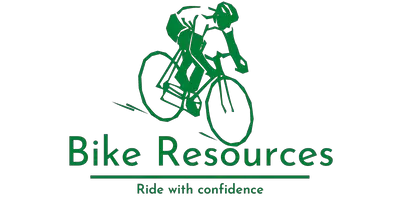Maximize Your Ride: The Mavic Tire Pressure Calculator Guide

Cycling proficiency isn’t just about pedaling; it’s about the intricate dance between the bike, the rider, and the road. Amidst this symphony, tire pressure emerges as a pivotal factor influencing your ride’s quality. The Mavic Tire Pressure Calculator serves as a compass, guiding cyclists toward the perfect pressure setting for their Mavic wheelsets.
Table of Contents
Mavic Tyre Pressure Calculator
Recommended Tyre Pressure:
How to Use the Mavic Tire Pressure Calculator:
Using the Mavic Tyre Pressure Calculator is straightforward. Begin by selecting your specific Mavic wheelset from the dropdown menu. Each wheelset holds unique characteristics, making this initial selection crucial for precision. Next, define your riding terrain – whether it’s road, trail, or a mix. Different terrains demand distinct pressure levels for optimal performance. Finally, input your weight to fine-tune the calculation. Heavier riders may require higher pressures for adequate support, while lighter riders benefit from lower pressures for enhanced comfort.
When to Use the Calculator:
Make it a habit to check your tire pressure before every ride. Terrain transitions are another instance where recalibrating the pressure is essential for maintaining optimal grip and performance. Additionally, if your weight changes significantly, recalibrate the tyre pressure for the best riding experience.
Benefits of the Calculator:
The Mavic Tyre Pressure Calculator provides tailored precision for Mavic wheelsets, ensuring optimal tire pressure settings that can impact safety, speed, comfort, and control. Adequate tire pressure prevents punctures, enhances grip, reduces rolling resistance for faster rides, absorbs shocks for a smoother experience, and augments handling and control, especially in challenging terrains or maneuvers.
Understanding the importance of tire pressure goes beyond mere inflation; it’s about fine-tuning your cycling journey:
Safety & Grip:
Cycling safety goes hand in hand with the gear you use. The right gear not only ensures your safety but also enhances your overall riding experience. Helmets, gloves, knee and elbow pads, reflective clothing, and appropriate shoes are essential safety gear. A well-fitted helmet is your primary defense against head injuries in case of falls or accidents. Gloves protect your hands and improve grip, while knee and elbow pads cushion impacts. Reflective clothing enhances visibility during low-light conditions, crucial for road safety. Proper shoes help in efficient pedaling and foot comfort during long rides.
Speed and Efficiency:
Speed in cycling is the result of both the rider’s effort and the bike’s efficiency. Riding efficiently requires optimal gear shifting, smooth pedaling cadence, and aerodynamic posture. Higher gear ratios contribute to faster speeds but demand greater exertion. Pedaling at a consistent cadence, known as “spinning,” enhances efficiency and reduces fatigue. Reducing wind resistance by maintaining an aerodynamic posture significantly improves speed. Additionally, the bike’s design, including lightweight frames, aerodynamic wheels, and streamlined components, plays a pivotal role in achieving greater speeds with minimal effort.
Comfort and Stability:
Comfort and stability are vital for an enjoyable and safe cycling experience. Proper bike fit, including saddle height and handlebar positioning, is essential for comfort. A comfortable saddle and properly padded cycling shorts reduce discomfort on long rides. Stability comes from a well-balanced bike with appropriate tire pressure, ensuring a smooth and controlled ride. Suspension systems, like shock absorbers or fork suspension, add comfort by absorbing shocks from uneven terrains. Properly inflated tires with suitable tread patterns offer stability on different surfaces.
Control and Handling:
Control and handling of a bike are influenced by various factors, including bike design, rider skill, and terrain. A bike’s geometry, wheelbase, and handlebar width affect its handling. Riding techniques, such as leaning into turns and proper braking, enhance control. Maintaining a centered and balanced posture on the bike allows for better handling, especially during cornering and maneuvering obstacles. Tire grip, influenced by tire quality, tread pattern, and inflation, significantly impacts control and handling on different surfaces. Learning and practicing bike handling skills in diverse conditions improve overall control and confidence while riding.
Conclusion:
The Mavic Tyre Pressure Calculator simplifies this complex equation, delivering tailored recommendations for specific wheelsets. It’s not just about numbers; it’s about unlocking a cycling experience that’s safe, efficient, and utterly enjoyable.
